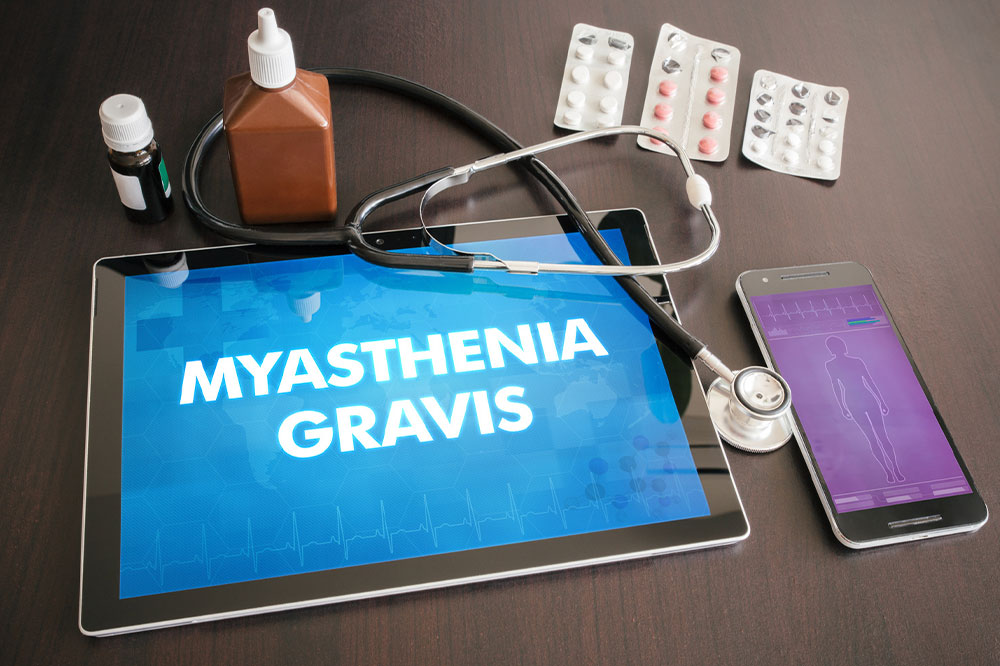Comprehensive Guide to Myasthenia Gravis: Causes, Symptoms, and Effective Treatment Strategies
This comprehensive article explores myasthenia gravis in detail, covering causes, symptoms, diagnosis, and treatment options. It emphasizes the importance of early detection and personalized management to improve quality of life. The guide provides insight into autoimmune mechanisms, diagnostic procedures, and current therapies, helping patients and caregivers understand this complex neuromuscular disorder better. Awareness of potential complications and lifestyle considerations is also highlighted to ensure holistic care and ongoing management of MG for optimal health outcomes.

Comprehensive Guide to Myasthenia Gravis: Causes, Symptoms, and Effective Treatment Strategies
Myasthenia gravis (MG) is a complex neurological disorder that primarily affects the communication pathways between nerves and muscles, leading to muscle weakness. As the most common neuromuscular transmission disorder, MG has garnered increasing attention from medical professionals and patients seeking effective management strategies. The condition affects approximately 20 out of every 100,000 people worldwide, making it a rare but significant health concern. Despite its rarity, early diagnosis and intervention are crucial, as symptoms can progressively worsen if left untreated. This detailed guide aims to explore the underlying causes, common symptoms, diagnostic approaches, treatment options, potential complications, and lifestyle considerations associated with myasthenia gravis, providing valuable insights for patients, caregivers, and healthcare providers alike.
Understanding the Basics of Myasthenia Gravis
Myasthenia gravis is characterized by an impairment in the transmission of nerve signals to muscle tissues, resulting in muscle weakness and fatigue. The name itself reflects its nature: "myasthenia" meaning muscle weakness and "gravis" indicating severity. The disorder primarily targets voluntary muscles involved in activities such as eye movements, facial expressions, swallowing, speaking, breathing, and limb movement. Patients often report that their symptoms tend to worsen with activity (fatigue) and improve with rest, a hallmark feature that aids in diagnosis.
Recognizing the Symptoms of Myasthenia Gravis
Symptoms vary based on which muscles are affected and the severity of the disease at different stages. Common signs include:
Drooping eyelids (ptosis) that may affect one or both eyes, leading to blurred or double vision (diplopia)
Weakness or paralysis of facial muscles, causing expressions to appear dull or asymmetrical
Difficulty speaking clearly, with slurred speech or voice changes
Problems swallowing, which can sometimes lead to choking or aspiration
Shortness of breath or difficulty breathing, especially during exertion or illness
Weakness in neck muscles, resulting in difficulty holding up the head
Muscle weakness in the arms and legs, impacting mobility, grip strength, and overall physical endurance
These symptoms tend to fluctuate, sometimes worsened by physical activity or stress and alleviated by rest. In some cases, symptoms may remain mild for years, while others experience rapid progression.
Factors That Exacerbate Myasthenia Gravis Symptoms
While the underlying autoimmune process drives MG, several external factors can exacerbate symptoms, leading to crises or hospitalizations. These include:
Physical or emotional stress
Infections, such as respiratory illnesses
Fatigue and overexertion
Certain medications, including antibiotics, beta-blockers, and muscle relaxants
Changes in weather or temperature extremes
Pregnancy, due to hormonal shifts
Management of these triggers is vital to maintaining stability and improving quality of life.
Understanding the Causes of Myasthenia Gravis
The exact etiology of MG involves a complex interplay of autoimmune dysfunction, thymus gland abnormalities, and genetic factors. The main driver is an autoimmune response in which the body's immune system mistakenly targets vital components of nerve-muscle communication.
Autoimmune Response
In most cases, MG is caused by the production of antibodies that target acetylcholine receptors (AChRs) located on the muscle cell surface. Acetylcholine is a neurotransmitter that transmits signals from nerve endings to muscle fibers, enabling movement. When antibodies block or destroy these receptors, muscle contractions weaken or fail. Aside from AChRs, some patients develop antibodies against muscle-specific kinase (MuSK) or low-density lipoprotein receptor-related protein 4 (LRP4), both of which also play roles in neuromuscular signaling.
Thymus Gland Abnormalities
The thymus gland, central to the immune system, often exhibits abnormalities in MG patients. An enlarged thymus or the presence of thymomas (tumors of the thymus) can lead to abnormal immune responses, promoting antibody production against neuromuscular junction components. Thymectomy, or surgical removal of the thymus, has become a common treatment in suitable candidates, often leading to symptom improvement or stabilization.
Other Contributing Factors
Rarely, congenital myasthenic syndromes—genetic disorders present from birth—may mimic MG symptoms. Neonatal MG occurs transiently in newborns due to maternal antibody transfer. Environmental triggers, such as infections, stress, or certain drugs, can influence disease onset or severity, making it a multifaceted condition.
Diagnosing Myasthenia Gravis
Accurate diagnosis is essential for initiating effective treatment. The process involves several steps:
Clinical Evaluation: A detailed medical history and physical examination focusing on muscle strength and fatigue patterns.
Blood Tests: Detection of specific autoantibodies, including anti-AChR, anti-MuSK, or anti-LRP4 antibodies.
Electrophysiological Tests: Nerve conduction studies and electromyography (EMG) assess neuromuscular transmission efficiency and muscle response to stimulation.
Tensilon Test: Administration of edrophonium chloride, an acetylcholinesterase inhibitor, that temporarily improves muscle strength, supporting diagnosis.
Imaging Studies: CT or MRI scans of the chest to evaluate the thymus for tumors or hyperplasia.
Combining these assessments allows physicians to differentiate MG from other neuromuscular conditions and design personalized treatment plans.
Potential Complications and Risks
While manageable with proper care, MG can lead to serious health issues if not adequately treated.
Myasthenic Crisis: A life-threatening event characterized by severe muscle weakness affecting breathing, requiring emergency interventions such as ventilatory support.
Thymic Tumors: Thymomas can be malignant; hence, careful monitoring and surgical removal may be necessary.
Associated Autoimmune Disorders: Increased risk of thyroid diseases, rheumatoid arthritis, and systemic lupus erythematosus (Lupus).
Understanding and monitoring these risks are vital for comprehensive patient care.
Management and Treatment Options for MG
Although there is currently no cure for myasthenia gravis, various treatments aim to reduce symptoms, improve quality of life, and prevent complications. The choice of therapy depends on disease severity, age, comorbidities, and patient response.
Key Treatment Strategies:
Acetylcholinesterase Inhibitors: Medications like pyridostigmine enhance communication at the neuromuscular junction, providing symptomatic relief.
Immunosuppressive Drugs: Corticosteroids and other agents suppress abnormal immune activity, reducing antibody production.
Plasmapheresis and Immunoglobulin Therapy: Procedures that remove or block circulating antibodies, rapidly improving symptoms during crises or severe exacerbations.
Surgical Intervention: Thymectomy has shown benefits in certain cases, especially when thymomas are present.
Regular follow-up, physical therapy, and lifestyle adjustments are integral to long-term management and maintaining functional independence. Additionally, supportive therapies such as speech therapy, respiratory therapy, and counseling can help address specific challenges.
In conclusion, myasthenia gravis is a complex autoimmune neuromuscular disorder that requires multidisciplinary care. Early diagnosis, careful monitoring, and personalized treatment plans are keys to controlling symptoms, preventing life-threatening complications, and enhancing patients’ quality of life. Ongoing research continues to explore new therapeutic options, offering hope for more effective and targeted treatments in the future.
Living with MG involves adaptation and active management, but with appropriate medical intervention and support, many patients can lead active, productive lives and maintain their independence for many years.





